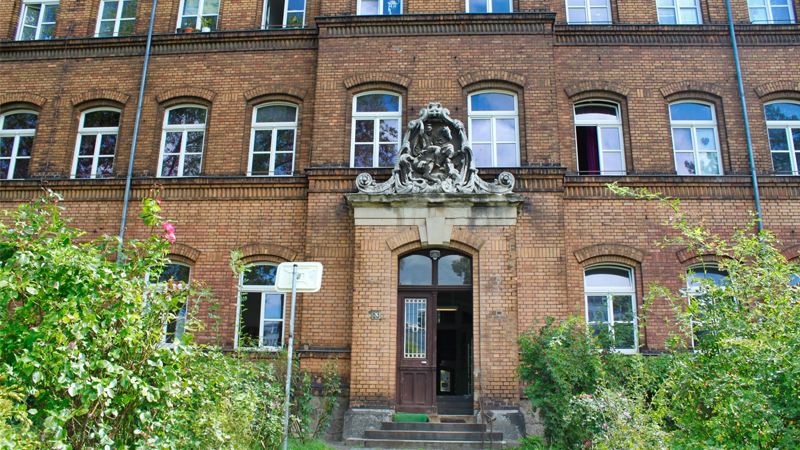
History of the
Site
The History of the Site
The Institution for Forced Labor at St. Georg
Riebeckstraße 63 was a focal point of social exclusion in the political systems of the 19th and 20th centuries. In 1892, the “St. Georg Forced Labor Institution” was opened at Riebeckstraße 63 on a total of 28,000 square meters. The ensemble of buildings, which is still largely intact today, housed a workhouse as well as a shelter for institutionalized and homeless people. The police sent men and women here for detention. Officially, the workhouse was used for the “moral improvement of the work-shy, drunken, and dissolute poor”.
In 1909, the institution was renamed the “Municipal Workhouse”. From its inception, it represented a repressive municipal welfare policy that used exclusion, discipline, and forced labor to combat social phenomena such as poverty, unemployment, and mental illness.
Riebeckstraße 63 under National Socialism
From 1933 to 1945, Riebeckstraße 63 became the hub of the city’s Nazi persecution policy, through which numerous persecuted groups passed. Roma and Sinti were forced to work at the site from 1936, and Jews from 1938. At least 76 inmates of the municipal workhouse were victims of “euthanasia” crimes by 1941.
During World War II, the site served as a central distribution point for Nazi forced labor. It also served as a collection and transit camp for Jews deported to concentration and extermination camps. In addition, the basement of one of the buildings housed a police detention center and a “foreigners’ prison,” where political prisoners, forced laborers, and other persecuted persons were temporarily detained.
Riebeckstraße 63 from 1945 to today
The site of the former Municipal Labor Institute has been used for various purposes since 1945. Shortly after the end of the war, a repatriation camp for forced laborers from Poland was established here, and in 1946, a so-called welfare home for sexually transmitted diseases.
In 1952, this home became a closed venereological ward. The municipal authorities forcibly admitted girls and women, often without any legal basis. They had to undergo gynecological examinations against their will. Venereological wards, popularly known as “tripper castles,” were not places of recovery, but of discipline and abuse.
The workhouse was renamed the “Home for Social Care” in the GDR in 1954 and has been used as a “social home” since 1961. Since 1971, it also housed a branch of the Leipzig-Dösen District Hospital for Psychiatry and Neurology.
After the political change in 1989/90 the use of the building changed again. The venereological ward was closed and a group of activists campaigned for the de-hospitalization of the social home. Since 1999, the site has been under the management of the Municipal Enterprise for Disabled Persons (Städtischer Eigenbetrieb Behindertenhilfe, SEB). Today, the site houses a day care center, a residential group for children and young people, and accommodation for refugees.
Audio tour of Riebeckstraße 63
An audio tour provides more information about the site and its history. You can listen to the tour at home or while walking around the site. You can also borrow headphones on site during the opening hours of the gatehouse, every Thursday from the beginning of June to the end of August 2022, from 14:00 to 17:00.
Go to the audio tour: https://rundgang.riebeckstrasse63.de
